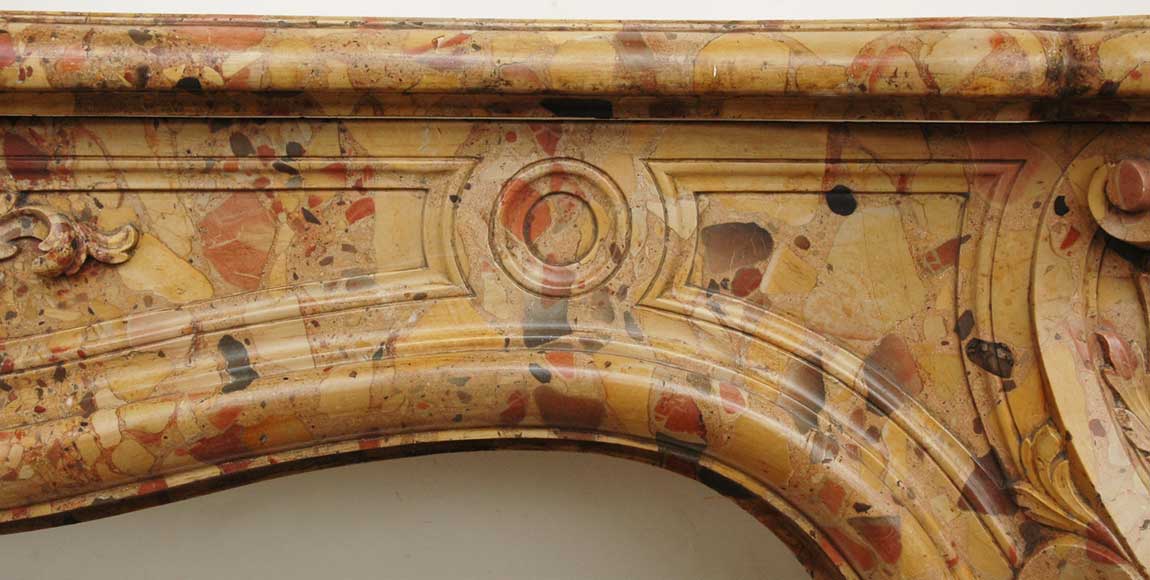Breche d'Alep marble
Download PDFBreche d'Alep marble was extracted in the commune of Tholonet in Bouches-du-Rhône from 1712, then in Beaurecueil in 1735 and in Saint-Antonin in 1756. Against a yellow background, Breche d'Alep marble is made up of large rounded fragments of browns, greys, red or blacks.
This Breche d'Alep marble was used a lot during the 18th and 19th century, and also the start of the 20th century, especially for furniture and fireplaces. The Carnavalet museum in Paris conserves a Louis XV chest of drawers in Chinese lacquer, legs from Madame Bouvier, with a shelf made out of Breche d'Alep.
A very beautiful antique Regence style fireplace decorates the salon of the Grande Singerie at Château de Chantilly.
Bibliography
J. Dubarry de Lasalle, Identification des marbres, Ed. H. Vial, Dourdan, 2000
J. Dubarry de Lasalle, Utilisation des marbres, Ed. H. Vial, Dourdan, 2005
Darluc Michel, Histoire Naturelle de la Provence, 1782.









